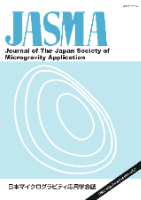
International Journal of Microgravity Science and Application
Scope & Guideline
Pioneering Research for a Weightless Future
Introduction
Aims and Scopes
- Microgravity Effects on Material Science:
Research on how microgravity influences the properties and behaviors of materials, including studies on solidification, phase changes, and crystallization. - Fluid Dynamics in Microgravity:
Investigation of fluid behavior and interactions in microgravity, including studies on surface tension, droplet dynamics, and flow patterns. - Thermal and Transport Properties:
Exploration of thermal conductivity, diffusion coefficients, and other transport phenomena in various materials under microgravity conditions. - Electrostatic Levitation Techniques:
Development and application of electrostatic levitation methods for studying materials without container interference, allowing for precise measurements. - Applications in Space Exploration:
Research aimed at enhancing technologies and understanding processes relevant to space missions, including propellant management and cryogenic systems.
Trending and Emerging
- Advanced Measurement Techniques:
There is a growing emphasis on innovative measurement methodologies, such as in-situ X-ray fluorescence analysis and high-speed imaging, which enhance the accuracy and reliability of microgravity research. - Complex Fluid Behavior and Interactions:
Recent studies have focused on the dynamics of complex fluids, such as the behavior of droplets in various configurations, which is critical for applications in fuel management and material processing. - Material Processing in Microgravity:
Research on the production and manipulation of materials, particularly through electrostatic levitation and other non-contact methods, is gaining traction, signaling a shift towards practical applications of microgravity science. - Role of Machine Learning in Microgravity Research:
The integration of machine learning techniques for data analysis and phase detection in microgravity studies is emerging, indicating a trend towards leveraging advanced computational methods to enhance research outcomes.
Declining or Waning
- Biomarker Studies in Space:
Research on salivary stress biomarkers and other biological assessments during space missions has decreased, possibly due to a shift towards more technical and material-focused studies. - Dust Explosions in Microgravity:
While initially a significant concern for lunar and planetary exploration, studies on dust explosions have become less frequent, indicating a possible reassessment of their risks or improved understanding of mitigation strategies. - Ground-Based Experimental Comparisons:
The focus on ground-based experiments to simulate microgravity conditions appears to be declining, as more emphasis is placed on actual microgravity experiments conducted aboard the ISS.
Similar Journals

JOURNAL OF POROUS MEDIA
Connecting Researchers Across Diverse DisciplinesJOURNAL OF POROUS MEDIA is a prominent interdisciplinary journal published by Begell House Inc, focusing on the advancement of knowledge related to porous media across various fields, including Biomedical Engineering, Condensed Matter Physics, Materials Science, and Mechanical Engineering. With its ISSN 1091-028X and E-ISSN 1934-0508, this journal serves as a vital platform for researchers and professionals to disseminate groundbreaking findings and foster collaboration within the scientific community. The journal is ranked in the Q2 and Q3 quartiles in multiple categories as of 2023, demonstrating a notable standing in Scopus rankings across several engineering and physics disciplines. Though not an open-access journal, it provides essential insights and advancements within the field of porous media research, encouraging innovative exploration and practical applications in real-world scenarios. Published from 1998 through 2024, JOURNAL OF POROUS MEDIA is an invaluable resource for students, researchers, and industry experts seeking to deepen their understanding of complex porous systems.
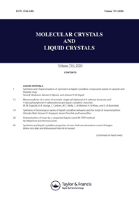
MOLECULAR CRYSTALS AND LIQUID CRYSTALS
Decoding the Dynamics of Molecular OrganizationMOLECULAR CRYSTALS AND LIQUID CRYSTALS is a distinguished journal published by Taylor & Francis Ltd, dedicated to the comprehensive examination of the structural and physical properties of molecular crystals and liquid crystals, with applications spanning fields such as chemistry, materials science, and condensed matter physics. Established in 1972, this journal has carved out a niche in the academic landscape despite facing recent challenges, as reflected in its current quartile rankings of Q4 across multiple categories in 2023. The journal not only serves as a platform for groundbreaking research but also invites contributions that further explore the intricate relationships between molecular organization and material properties, thereby advancing our understanding of these fascinating substances. With a commitment to fostering scientific dialogue, MOLECULAR CRYSTALS AND LIQUID CRYSTALS aims to reach a broad audience of researchers, professionals, and students, providing insights that are pivotal in driving innovation in materials research.
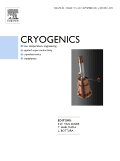
CRYOGENICS
Connecting Researchers in the Realm of Cryogenics.CRYOGENICS, published by Elsevier Science Ltd, is a highly regarded journal dedicated to the dynamic field of supercooling and cryogenic engineering. With its ISSN 0011-2275 and E-ISSN 1879-2235, the journal features a diverse array of topics encompassing both Materials Science and Physics and Astronomy, as evidenced by its 2023 Q2 ranking in both categories. With a history spanning over six decades, from 1960 to 2024, CRYOGENICS serves as a vital resource for researchers, professionals, and students interested in the latest advancements in cryogenic technologies. Although it operates under a subscription model, the journal is recognized for its scholarly contributions and rigorous peer-review process, effectively disseminating knowledge that informs industry practices and academic research alike. By navigating complex phenomena at low temperatures, CRYOGENICS plays a crucial role in propelling innovations across multiple disciplines, making it an essential publication for anyone engaged in this captivating field.
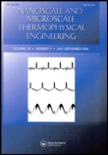
Nanoscale and Microscale Thermophysical Engineering
Connecting Science and Technology in Thermophysical EngineeringNanoscale and Microscale Thermophysical Engineering is a leading scholarly journal published by Taylor & Francis Inc, focusing on the latest advancements in the fields of heat transfer, thermophysical properties, and nanoscale and microscale phenomena. With an ISSN of 1556-7265 and an E-ISSN of 1556-7273, this journal has established itself as a critical resource within the scientific community since its inception in 2006. The journal is ranked in the Q2 category across several disciplines, including Atomic and Molecular Physics, Condensed Matter Physics, Materials Science, and Mechanics of Materials, reflecting its significant contribution to ongoing research and development. Researchers and professionals in related fields benefit from its open access options, facilitating a wider dissemination of innovative findings and methodologies. With a commitment to addressing contemporary challenges in thermophysical engineering at the nanoscale and microscale levels, this journal not only fosters academic discussion but also accelerates technological breakthroughs and applications in various industries.
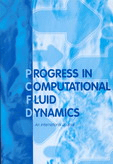
PROGRESS IN COMPUTATIONAL FLUID DYNAMICS
Innovating Computational Approaches for Fluid DynamicsPROGRESS IN COMPUTATIONAL FLUID DYNAMICS, published by InderScience Enterprises Ltd, is a vital journal in the realms of Computer Science Applications and Condensed Matter Physics. Established in 2001, this journal serves as a platform for disseminating innovative research findings and technological advancements in computational fluid dynamics, targeting both theoretical and applied aspects. With a current impact factor positioning it in the Q4 quartile for its fields, it captures a wide array of topics including numerical methods, simulation techniques, and real-world fluid dynamics applications, fostering dialogue among researchers, practitioners, and educators alike. Although it does not provide Open Access options, it remains an important resource for those investigating fluid dynamics phenomena. As it continues to evolve through 2024, PROGRESS IN COMPUTATIONAL FLUID DYNAMICS is positioned to contribute significantly to the scientific community, addressing core challenges while promoting collaboration and knowledge exchange.

Experimental and Computational Multiphase Flow
Pioneering Advances in Multiphase Flow ScienceExperimental and Computational Multiphase Flow, published by SpringerNature, is a prestigious academic journal that critically examines advancements in the field of fluid dynamics, with a specialized focus on multiphase flow phenomena. Since its inception in 2019, the journal has established a remarkable reputation, attaining Q1 status in Fluid Flow and Transfer Processes as well as Mechanical Engineering according to the 2023 category quartiles, reflecting its high impact and relevance in these domains. With Scopus rankings placing it among the top 15 journals in both Chemical Engineering and Nuclear Energy and Engineering, Experimental and Computational Multiphase Flow is an essential resource for researchers, professionals, and students engaged in cutting-edge studies and applications. Although it operates on a subscription model, the journal remains dedicated to disseminating high-quality research and fostering a deeper understanding of complex fluid interactions across various scientific disciplines. By prioritizing innovative methodologies and interdisciplinary collaborations, the journal aims to significantly contribute to the ongoing evolution of multiphase flow research, recognizing its critical importance in engineering and energy sectors.

TRANSPORT IN POROUS MEDIA
Exploring the Dynamics of Fluid and Energy FlowTRANSPORT IN POROUS MEDIA is a prominent peer-reviewed journal published by Springer, dedicated to advancing the understanding of fluid and energy transport processes in porous structures. With an ISSN of 0169-3913 and an E-ISSN of 1573-1634, this journal has established itself as a leading platform in the realms of chemical engineering and catalysis, achieving a ranking of Q2 in Chemical Engineering and Q3 in Catalysis as of 2023. The journal encompasses a wide scope, covering theoretical, experimental, and applied research that explores the complexities of porous media transport phenomena, thus catering to a diverse audience of researchers, professionals, and students in related fields. Although open access options are not offered, TRANSPORT IN POROUS MEDIA remains an excellent resource for those seeking to stay at the forefront of advancements and challenges in porous media transport. With a publication history dating back to 1986 and ongoing contributions expected until 2024, this journal continues to play a crucial role in fostering knowledge and innovation within the discipline.

Advances in Astronomy and Space Physics
Navigating the Depths of Astronomy and Space Physics.Advances in Astronomy and Space Physics is an esteemed journal dedicated to the exploration and dissemination of research in the expansive fields of astronomy and space science. Published by Taras Shevchenko National University of Kyiv, this journal provides a platform for researchers, professionals, and students to share groundbreaking studies and innovations. With an ISSN of 2227-1481, it covers a wide range of subjects including astrophysics, planetary sciences, and space exploration technologies, thereby fostering interdisciplinary collaboration. Although not an Open Access journal, it maintains a commitment to high-quality, peer-reviewed content that contributes significantly to the advancement of scientific knowledge. The journal's mission is to promote sustainable practices in space research while also exploring the implications of discoveries on Earth and beyond. By maintaining rigorous publication standards, Advances in Astronomy and Space Physics aims to serve as a critical resource for those involved in the ever-evolving study of our universe.
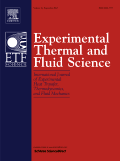
EXPERIMENTAL THERMAL AND FLUID SCIENCE
Unleashing the potential of experimental techniques in engineering.EXPERIMENTAL THERMAL AND FLUID SCIENCE is a prestigious academic journal published by Elsevier Science Inc, dedicated to advancing the fields of thermal and fluid sciences. With a strong focus on innovative experimental research, it plays a crucial role in disseminating new knowledge and techniques across multiple domains, including Aerospace Engineering, Chemical Engineering, Fluid Flow and Transfer Processes, Mechanical Engineering, and Nuclear Engineering. Holding a notable impact factor and ranking in the Q1 quartile across these categories since 2023, the journal is recognized for its high-quality contributions, which appeal to a diverse audience of researchers, industry professionals, and students alike. Additionally, with dedicated coverage from its inception in 1988 to projections extending through 2025, EXPERIMENTAL THERMAL AND FLUID SCIENCE provides a vital platform for sharing advancements in experimental techniques and findings that shape the future of engineering and applied sciences.
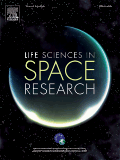
Life Sciences in Space Research
Innovating Insights for Life in Extraterrestrial EnvironmentsLife Sciences in Space Research, published by ELSEVIER, is a leading journal dedicated to advancing the understanding of life sciences in the context of space exploration and extraterrestrial environments. With a focus on interdisciplinary research, the journal addresses critical topics spanning Agricultural and Biological Sciences, Astronomy and Astrophysics, Ecology, and Health, Toxicology and Mutagenesis. Established in 2014 and set to continue through 2024, it is recognized with a solid impact factor and impressive quartile rankings—including Q2 in several categories, reflecting its influential position among contemporary scientific discourse. The journal welcomes a diverse array of research articles that delve into the implications of space travel on biological systems, innovative ecological practices for sustained extraterrestrial habitation, and critical health-related issues associated with radiation exposure. Researchers, professionals, and students will find Life Sciences in Space Research an invaluable resource for cutting-edge insights and developments in the rapidly evolving field of astrobiology and space science. For more information, please access the journal through its designated platform.